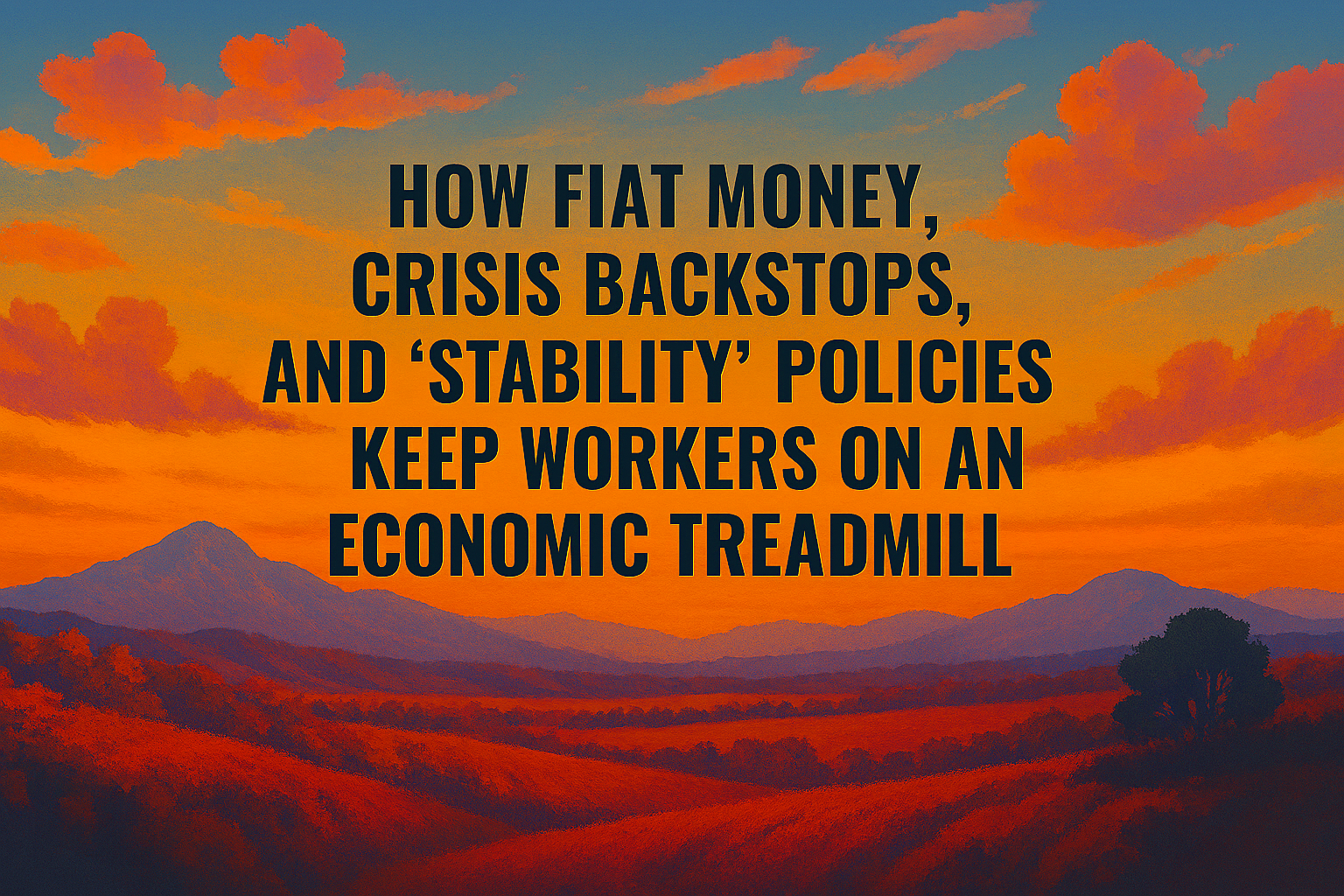Summary
Central banks, established initially to address state financing issues such as war debts and crisis management, have evolved over the centuries. They have developed a toolkit that guides credit, sets the terms of money, and socializes losses. This historical context is crucial to understanding their current role, which tends to favor the well-capitalized and politically connected, while workers’ pay is affected by taxation, inflation, and debt.
The patterns occur repeatedly.
· The concept of fiscal–monetary fusion, which has been present since the inception of central banks, is a key theme in this article. It underscores the intertwined nature of fiscal and monetary policies and their implications for the economy.
· Bank of England (1694): founded to finance the war against France, in return for legal privileges as the government’s banker—an early template for public borrowing enabled by a bank with special status.
· Banque de France (1800): created with Napoleon’s backing to stabilize money after the Revolution; gradually secured a monopoly of note issue and deepened Treasury ties.
· The lender‑of‑last‑resort becomes the system‑of‑last‑resort.
· Federal Reserve (1913): designed to mitigate panics, it later expanded powers after the 1930s and again after 2008, establishing a standing backstop for financial markets.
· Inflation: the hidden tax.
· Weimar (1921–1923): Reichsbank accommodation of fiscal deficits destroyed purchasing power and savings, serving as a cautionary tale of what extreme inflation can do. These historical examples are essential for understanding the risks of fiat systems.
· Fiat era post‑1971: with Gold convertibility ended, policy discretion becomes the anchor. Money is what central banks say it is—and how much of it they create.
· Privatized profits, socialized losses.
· Gold seizure & devaluation (U.S., 1933–34): EO 6102 compelled Gold surrender; the Gold Reserve Act then repriced the dollar to $35/oz—a legalistic transfer from citizens to the sovereign debtor.
· QE and emergency facilities (2008–2020): trillions in Fed asset purchases stabilized markets and lifted asset prices; wage earners’ real incomes lagged.
· Rules for some, discretion for others.
· ECB’s 2012 “whatever it takes” (OMT): the credible promise of unlimited sovereign support cut spreads and recapitalized banks holding those bonds—but also encouraged zombie lending, blunting gains to real activity.
· Bank of Japan (QQE & YCC, 2013–2024): pinned yields, bought ETFs/J‑REITs, then stepped back in 2024, implicitly recognizing market‑function side effects.
Mises on fiat: the built-in temptations
“Inflation is a policy of confiscation… taxation by stealth.”
— The Theory of Money and Credit
“The boom can last only as long as the credit expansion progresses at an ever-accelerated pace… the inevitable end… brings about the Depression.”
— Human Action
“The Gold standard… made the monetary unit independent of the arbitrary decisions of governments.”
— Human Action
For Mises, fiat money does four dangerous things:
· Removes a rigid constraint (commodity backing), replacing it with political discretion.
· Channels wealth from savers/wage earners to debtors and asset owners via inflation.
· Distorts prices/interest rates, sowing malinvestment and future busts.
· Erodes trust, because value rests on institutional credibility that waxes and wanes.
The worker’s treadmill
- Wages vs. prices: Inflation and bracket creep erode real take-home pay.
- Asset inflation: Central‑bank‑engineered low rates and asset purchases inflate collateral values, rewarding those who already own assets.
- Debt dependence: Households and small firms lean on credit to bridge the gap—paying fees and interest into the same system that central banks are designed to stabilize.
Policy implications (no magic wands—just honest constraints)
- Simplicity over carve-outs: Broad bases, lower rates, fewer exemptions reduce rent-seeking leverage.
- Transparency over stealth: Put actual costs on the budget; stop financing via inflation where possible.
- Hard constraints: Debt brakes, sunset clauses, and limits on emergency asset purchases.
- Decentralization and exit: Fiscal/monetary competition disciplines predation.
- Equal rules of resolution: End “too big to fail” and the two-tier rulebook.
Footnotes
· Ludwig von Mises, The Theory of Money and Credit (1912; various editions). ↩ ↩2
· Bank of England—founding to fund war; government banker; evolution of functions. Encyclopaedia Britannica. ↩
· Goodhart, C. “The Bank of England, 1694–2017.” LSE (accepted ms). ↩
· Founding and History of the Banque de France. Banque de France. ↩
· Banque de France. Encyclopaedia Britannica. ↩
· The Federal Reserve System: Purposes & Functions, Section 4 (Financial stability role). Board of Governors. ↩
· Carlson & Wheelock, “The Lender of Last Resort: Lessons from the Fed’s First 100 Years,” FRB St. Louis (WP). ↩
· Hyperinflation in the Weimar Republic. Encyclopaedia Britannica. ↩
· Webb, S. “The Supply of Money and Reichsbank Financing of Government and Corporate Debt in Germany, 1919–1923.” Journal of Economic History (JSTOR). ↩
· Executive Order 6102 (primary text). American Presidency Project, UCSB. ↩
· Executive Order 6102. Wikipedia (summary + references). ↩
· Large‑Scale Asset Purchases (QE) 2008–2014. Federal Reserve Bank of New York. ↩
· Edison Yu, “Did Quantitative Easing Work?” Federal Reserve Bank of Philadelphia. ↩
· Acharya et al., “Whatever It Takes: The Real Effects of Unconventional Monetary Policy.” Review of Financial Studies (2019). ↩
· Alcaraz et al., “Whatever it takes: Impact of a major nonconventional monetary policy intervention?” BIS Working Paper (2018); see also ECB WP (2019). ↩
· Shirai, S. “The BoJ’s ETF Purchases under QQE with YCC,” in Monetary Policy Implementation in East Asia (Springer, 2020). ↩
· Governor Kazuo Ueda, “On the recent changes in the BoJ’s Monetary Policy Framework,” Peterson Institute (BIS speech transcript, 19 April 2024). ↩
· Ludwig von Mises, Human Action (1949; various editions). ↩
· Ludwig von Mises, Human Action, discussions on the Gold standard and monetary discipline. ↩
